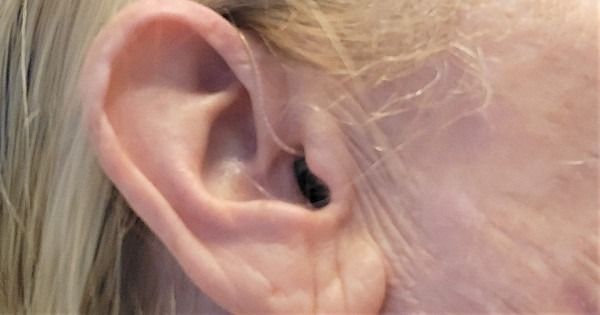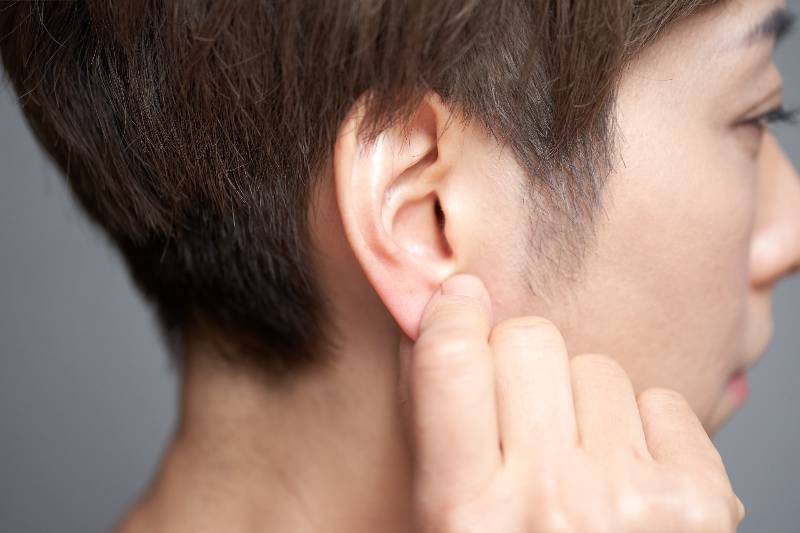Introduction
Otosclerosis, a progressive hearing disorder affecting mainly the senior population, has a multitude of impacts that often go unnoticed. While clinical discussions focus on symptoms, diagnosis, and treatment, the individuals living with the condition experience challenges that extend well beyond the medical sphere. This blog aims to highlight these aspects of living with otosclerosis – the psychosocial consequences, economic burdens, effects on self-esteem and confidence, impact on leisure activities, and adaptation strategies. In bringing these narratives to the forefront, we aim to foster a deeper understanding of otosclerosis and offer a source of shared experience and advice for those on the same journey.
For many, the diagnosis of otosclerosis marks the beginning of a journey that is both challenging and transformative. The path may be strewn with obstacles and moments of self-doubt, but it is also an opportunity to cultivate resilience, learn new skills, and develop a unique perspective on life. Every journey is unique, and so is the experience of living with otosclerosis. Yet, there are common threads – shared challenges and triumphs that unite these individuals. It is these shared experiences that we explore in this blog.
Through the lens of personal stories, we delve into the often-unspoken aspects of living with otosclerosis. These narratives offer a glimpse into the realities of this condition, extending beyond the clinical to encompass the emotional, social, and practical aspects. We hope that by sharing these stories, we can provide comfort, encourage dialogue, and promote understanding among seniors with otosclerosis, their loved ones, and the larger community.
This blog serves as a platform for these unheard voices, presenting their experiences and insights with respect and empathy. Join us as we delve into these narratives, exploring the human perspective on living with otosclerosis.
The Psychosocial Aspects of Living with Otosclerosis
The psychosocial implications of living with otosclerosis often form the unseen part of the iceberg. Not visible at first glance, these aspects significantly shape the individual’s experience with the condition. Fear, social isolation, and stigma associated with hearing loss often accompany the journey with otosclerosis.
John, a 67-year-old man diagnosed with otosclerosis, shared how he initially felt a profound sense of loss. The fear of progressive hearing loss and the potential impact on his life was overwhelming. He also noticed that his social interactions started to dwindle, as he found it challenging to participate in group conversations or public events. Yet, John found solace and support in a local support group for people with hearing loss. Sharing his experiences and fears in a safe space helped him better manage the psychosocial aspects of his condition.
Susan, on the other hand, found it hard to cope with the stigma associated with hearing loss. Being a retired teacher, she was used to being in a position of authority and being heard. However, with her progressive hearing loss, she felt she was not being taken seriously anymore. Susan decided to confront the situation head-on. She started sharing about her condition openly and educating others about otosclerosis. Her efforts not only helped her regain her confidence but also initiated conversations around the stigma associated with hearing loss.
Understanding the Economic Burden of Otosclerosis
Otosclerosis also carries an economic burden. From the cost of hearing aids and their maintenance to the expense of specialist appointments and treatments, the financial implications can be significant.
Carol, a 72-year-old woman, struggled with the cost of getting high-quality hearing aids. She had to make some difficult choices, adjusting her budget to accommodate this unexpected expense. She also needed to account for the ongoing cost of maintenance and potential replacements. Carol’s story underscores the need for adequate financial planning and resources to manage the economic burden of otosclerosis.
The economic impact also extends to employment for those still active in the workforce. Mike, a 59-year-old accountant, had to reevaluate his work life after being diagnosed with otosclerosis. His job required him to communicate with clients and colleagues regularly. When his hearing loss started to interfere with his work, he feared losing his job. However, with the support of his employer and by utilizing assistive technologies, he managed to continue working. Mike’s experience illustrates the intersection of the economic burden and employment, highlighting the importance of workplace support and accommodation for people with otosclerosis.
How Otosclerosis Affects Self-esteem and Confidence
Living with otosclerosis can also have profound effects on an individual’s self-esteem and confidence. The experience of hearing loss can make individuals question their abilities and worth.
Ann, a retired nurse, described how otosclerosis gradually affected her self-esteem. She found herself avoiding social interactions due to fear of miscommunication, which led her to feel increasingly isolated and unsure of herself. Ann’s self-esteem took a significant hit, as she began to perceive herself as less capable than before.
However, through counseling and joining a local otosclerosis support group, Ann was able to regain her confidence. She learned to see otosclerosis as a part of her life, not a determinant of her worth or abilities. Her story demonstrates that while otosclerosis can impact self-esteem, this effect is not insurmountable. Strategies such as counseling and peer support can significantly aid in rebuilding confidence.
.
The Impact of Otosclerosis on Leisure Activities
Otosclerosis can also affect an individual’s leisure activities, particularly those that involve auditory stimuli, such as music, movies, or social gatherings.
For George, a lifelong music enthusiast, otosclerosis felt like a personal affront. As his hearing loss progressed, he found it increasingly difficult to enjoy music in the way he used to. This, combined with the inability to follow conversations in noisy environments, led to George reducing his attendance at social gatherings. He found himself feeling out of place in situations that used to bring him joy.
However, George found a way around this by learning to play the piano. The vibration of the instrument provided him a unique way to experience music. Moreover, he started using a portable amplifier at gatherings, allowing him to participate in conversations better. Through these adaptive strategies, George was able to continue engaging with his favorite activities.
Adapting to Life with Otosclerosis: Practical Advice and Strategies
Adapting to life with otosclerosis is an ongoing process. It involves learning new strategies, making adjustments, and embracing supportive resources. From using hearing aids and other assistive technologies to engaging in speech reading training and auditory rehabilitation, there are multiple strategies to help seniors navigate life with otosclerosis.
Alice, who was diagnosed with otosclerosis in her early 60s, found that a combination of these strategies worked best for her. She used hearing aids, learned to read lips, and made some modifications at home to ensure a safer environment. Alice also emphasized the importance of emotional resilience. She said, “Otosclerosis is a part of my life, but it doesn’t define me. I had to learn to be kind to myself, accept my situation, and find ways to continue living my life to the fullest.”
James, who lives alone, enlisted the help of a service designed to assist seniors with daily tasks. This service helped him adapt his home environment, making it more otosclerosis-friendly, and assisted with tasks that became challenging due to his hearing loss. Through these adaptations, James was able to maintain his independence and quality of life.
Both Alice and James’s experiences show that while the journey of adapting to life with otosclerosis can be challenging, it is also full of opportunities for learning, growth, and self-discovery.
In concluding, living with otosclerosis is a journey that transcends the realm of medical treatment. It touches the core of personal identity and affects all facets of life – from professional engagements, relationships, leisure activities, to self-perception. Yet, as we’ve seen from the personal narratives shared here, this journey is also one of resilience, adaptation, and growth.
The psychosocial impact of otosclerosis underscores the importance of addressing not just the physical symptoms but also the psychological and social aspects. Support groups, counseling, and fostering open conversations about otosclerosis can significantly help in managing these impacts. Understanding the economic burden of otosclerosis is also crucial. It sheds light on the need for financial planning, workplace accommodations, and the importance of affordable assistive technologies.
Otosclerosis can affect one’s self-esteem and confidence, but with the right support and mindset, individuals can reclaim their confidence. Leisure activities may need to be adjusted, but innovative strategies and technologies can help maintain the joy of these pursuits. And as we’ve seen, adapting to life with otosclerosis is a dynamic process, one that involves not just medical interventions, but also emotional resilience, learning new skills, and making practical adjustments.
As we move forward in our understanding of otosclerosis, let’s remember that at the heart of every statistic, every treatment protocol, and every clinical conversation are individuals with their unique journeys. Let’s strive to not only hear their voices but to truly listen and understand.
In doing so, we can create a more inclusive and supportive world for those living with otosclerosis – a world that acknowledges the challenges, celebrates the triumphs, and above all, sees the person beyond the condition.
IncenSonic OTC Hearing Aids for Seniors and Adults
Introducing the revolutionary IncenSonic OTC Hearing Aids for Seniors and Adults. Experience the power of advanced technology combined with sleek, discreet design, all aimed at enhancing your hearing experience.
With the Receiver In Canal (RIC) technology, these professional-grade hearing aids deliver clear and full sound directly into your ear canal. Say goodbye to the frustrations of muffled sounds and enjoy the richness of 16-channel sound processing.
Our IncenSonic R20D1 OTC hearing aids offer all-day comfort and discretion. Their lightweight and behind-the-ear design ensure a comfortable fit that is barely visible to others. You can confidently wear them throughout the day without any discomfort.
No more hassle of buying batteries or frequent recharging. With the rechargeable feature, simply charge the hearing aids for 1 hour and enjoy up to 20 hours of continuous use. Say goodbye to the inconvenience of constant battery changes or daily recharging.
Experience the ultimate in noise and whistling cancellation. Our digital signal processing, combined with our unique hearing compensation algorithm, effectively reduces feedback noise, allowing you to focus on what truly matters – the sounds that surround you.
We are confident in the quality and performance of our IncenSonic OTC Hearing Aids. That’s why we offer a 100% satisfaction guarantee. If you’re not completely satisfied within the first 45 days, simply return them for a full refund. Your satisfaction and improved hearing experience are our top priorities.
Invest in your hearing and regain the joy of clear and amplified sound with IncenSonic OTC Hearing Aids for Seniors and Adults. Experience the perfect blend of cutting-edge technology, comfort, and satisfaction. Don’t let hearing loss hold you back any longer – take control of your hearing and enjoy life to the fullest.








